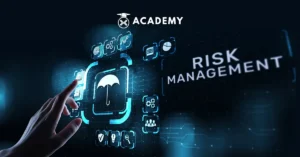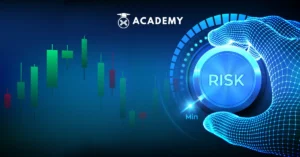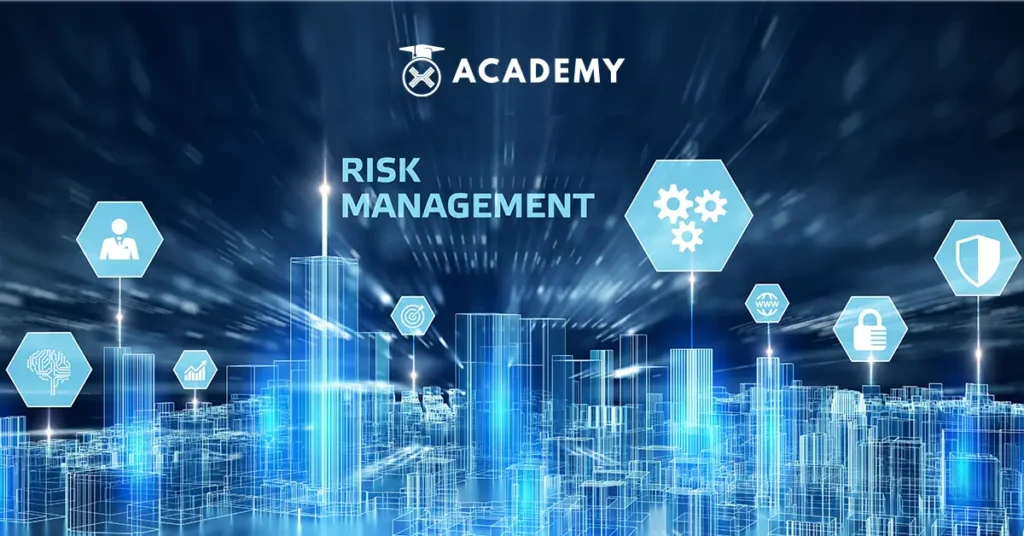In the business world, one of the important activities to do is risk management. Risk management is a structured approach to identifying, evaluating, and managing risks that can affect the achievement of an entity’s objectives, be it an organization, project, or investment world.
By implementing risk management, entities can be more proactive in dealing with uncertainty and minimizing the adverse effects. In line with that, risk management is key to achieving long-term success in various organizational, project, and investment contexts.
To understand what risk management is, starting from the definition, risk management, objectives, types, and how to do it, see the following review.
What is Risk Management?
Having a deep understanding of risk management, including its definition, is an important thing that cannot be ignored, especially for an entrepreneur.
Quoting lmsspada.kemdikbud.go.id, here are some definitions of risk management according to experts, including:
1. Fahmi (2010)
According to Fahmi (2010), risk management is a discipline that focuses on organizational actions to overcome management-based problems systematically and thoroughly.
2. Djojo Soedarso (2003)
Djojo Soedarso expressed a different view. For him, risk management is the application of general management functions to detail problems and solutions that arise in an organization, company, family, or community.
3. Tampubolon (2004)
Meanwhile, according to Tampubolon, risk management is a process to anticipate all the bad possibilities in a business transaction.
4. Darmawi (2014)
According to Darmawi, risk management includes identifying, analyzing, and controlling risks in various company activities, intending to increase overall effectiveness and efficiency.
5. Bramantyo (2008)
According to Bramantyo’s view, risk management can be explained as a structured and systematic process that involves identifying, measuring, mapping, and developing alternative risk handling.
6. Noshworthy (2000)
According to Noshworthy, risk management is the implementation of measures aimed at reducing the likelihood of such threats occurring and minimizing the damage if they do occur.
Risk analysis and risk control form the basis of risk management, where risk control is the application of appropriate controls to achieve a balance between safety, usability, and cost.
7. Djohanputro (2008)
In Djohanputro’s perspective, risk management can be defined as a structured and systematic process that involves identifying, measuring, mapping, developing alternative risk treatments, and monitoring and controlling the implementation of risk treatments.
8. Siagian and Sekarsari (2001)
According to Siagian and Sekarsari, the definition of risk management includes comprehensive risk management, not only limited to the purchase of insurance, but also involves managing the overall risk owned by the organization.
Why is Risk Management in Crypto Important?

In general, applying investment risk management will help traders and investors manage the risk of their investment in an asset.
More than just protecting capital, a risk management approach also contributes to achieving the investment targets that have been set.
In the context of the rapid development of the crypto asset market, it is often forgotten that crypto trading involves potential profits and significant risks. Therefore, understanding and implementing investment risk management is crucial for investors.
Risk management in crypto involves a series of principles and measures designed to prevent losses and preserve gains that have been made.
From basic investment principles, such as using only surplus funds, to the implementation of safety standards and discussions on asset allocation, all these elements form part of a crypto risk management strategy.
The main goal of crypto risk management is to ensure that you don’t lose all of your money despite engaging in high-risk investments or trades.
Adopting the right strategy will help investors achieve optimal returns while reducing potential losses.
In crypto asset trading, the associated risk is losing the invested funds. Therefore, predicting and controlling potential losses is at the core of risk management in crypto investment.
What is the Purpose of Risk Management?
After understanding the meaning of risk management, it is also important to recognize several reasons the company’s risk management process needs to be carried out.
Quoting the ocbc.id page, here are some of the objectives of risk management, including:
1. Minimization of Losses Due to Risk Occurrence
Once the risks have been identified and analyzed, the relevant parties need to take steps to prevent the risks from occurring and threatening business continuity.
In this case, risk managers can help the parties involved find risk management solutions, such as eliminating potential risks, minimizing their impact, or transferring risks to other parties.
2. Tracking Sources of Risk
The main objective of risk management is to mitigate or track potential sources that could threaten business productivity and security.
This tracking process involves research and procedural analysis of every company activity, from production processes to asset management.
3. Maintaining Company Stability and Growth
The next goal of risk management is for the company to grow stably by its business targets.
With the risk management process, the company can respond quickly to sources that can threaten business growth.
4. Providing a Sense of Security for Stakeholders
One of the objectives of enterprise risk management is for stakeholders, including investors, workers, suppliers, insurance, and other parties involved, to feel safe and trust the integrity of the company’s business.
5. Providing Risk Information for the Company
The next objective of risk management is to provide information about potential risks in the company. After conducting an analysis, a risk manager needs to compile a risk report based on data from the mitigation process that has been carried out.
Benefits of Risk Management
Although it involves long and continuous stages, the risk management process is, in principle, one of the most vital components of business management to protect the company from various problems.
Quoting the ocbc.id page, here are some of the benefits of implementing risk management, including:
1. Increase Company Profits
In addition to minimizing threats, the risk management process can increase business profitability.
By implementing enterprise risk management, you can analyze the management of resources that may not be efficient or effective, thus improving financial performance.
2. Helps the Company Achieve its Vision and Mission
A key benefit of enterprise risk management is that it supports the achievement of the business’s vision, mission, and goals.
Without properly implementing the risk management process, the company will face difficulties and even risks of failure in realizing its vision and mission.
3. Maintain Stakeholder Trust
The last benefit of enterprise risk management is maintaining stakeholder trust. If the company can prove itself to have a good reputation in the eyes of stakeholders, this trust will continue to be maintained.
Strong trust from stakeholders can open up more cooperation opportunities and strengthen the overall business reputation.
4. Preventing the Company from Collapsing
Another benefit of risk management is that it prevents businesses from experiencing total failure. Various factors can cause company bankruptcy, ranging from sub-optimal financial management to potential fraud.
The risk management process is an effective solution to avoid financial risks and mitigate potential bankruptcy.
Stages of Risk Management
The enterprise risk management process consists of several components or stages, including:
1. Risk Analysis Objectives
The first component in the enterprise risk management process is establishing the risk analysis’s goals or objectives. Before researching the source of risk, it is important to identify why risk analysis is necessary objectively.
Some examples of goals may include fraud prevention, protection of the company from uncollectible receivables, and so on.
2. Potential Risk Environments
The next component of the risk management process is identifying the environment with the potential for risk to emerge.
Each part of the business has different risks, so the company’s risk management strategy should also vary according to the relevant environment.
3. Identify Risk-Causing Events
After establishing the risk source environment, the next step in the enterprise risk management process is to identify risk-causing events.
For example, in the risk analysis stage in the production area, risk-causing events may involve work accidents, errors in raw material processing, and so on.
4. Valuation of Risk Types
The fourth stage in risk management is to determine each type’s valuation or level of risk. This measurement can be decided based on two main factors: the frequency of occurrence and the level of loss. Based on their frequency, risk types can be classified as follows:
- Most Probable
- Likely to Occur (Probable)
- Occasionally Likely to Occur (Fair)
- Slight Chance of Occurring
- Not Likely to Occur (Improbable)
Meanwhile, based on the level of loss or severity, risk types can be categorized as follows:
- Catastrophic
- High Loss
- Medium Loss
- Low Loss
- Negligible
5. Risk Decision Making
The fifth component of risk management is the decision-making process. Once the type of risk and its valuation level are identified, the company can develop policies or take actions appropriate to the risk’s characteristics.
Some of the decisions that may be taken in enterprise risk management include monitoring, transferring, or directly addressing the source of risk.
6. Documentation of the Risk Management Process
While a risk may have been addressed at one time, it is still possible for it to recur or reappear in the future. Therefore, companies need to create thorough documentation for every risk handling. This documentation acts as a record and guide for the future.
7. Informing Stakeholders of Risks
Ideally, all business stakeholders, especially those directly related to risk, should be aware of the company’s risk management process. Informing about risks can be done through coordination meetings or submitting risk-handling documentation to relevant stakeholders.
It helps to create a better understanding of the risks and the steps taken to address those risks.
Types of Risks in Risk Management
Now you understand enterprise risk management, its objectives, benefits, and components. To deepen your understanding of the risk management process, here are some common types of risks faced by businesses, including:
1. Political Risk
Political risk relates to threats arising from a country’s political conditions and policies. Examples include policy changes, political conflicts, and so on.
2. Geographical Risk
The next type of risk is geographical risk, which arises from the company’s physical location. Examples include locations prone to earthquakes, tsunamis, landslides, and other natural disasters. Risk management for this type can involve disaster mitigation, emergency simulation, and asset insurance.
3. Business Risk
Another common type of risk is business risk, which is related to a company’s operational activities. Examples of business risk management include the implementation of Occupational Safety and Health (OHS) practices, oversight in the capital budgeting process, human resource training, and other measures.
4. Competition Risk
Another common type experienced by businesses is competition risk, which arises from intense competition in the industry. Enterprise risk management strategies to address this risk involve establishing a business advocacy team and devising anticipatory strategies against competitors’ moves.
5. Risk of Economic Uncertainty
In addition to some of the risks above, companies also face the risk of national economic uncertainty, such as inflation, currency instability, bubble economy, and other macroeconomic issues.
Risk Management Example
Quoting katadata.co.id, risk management can be divided into two main types: pure risk and speculative risk. Both types of risk are closely related to the element of uncertainty. The following is an explanation, namely:
1. Pure Risk
Pure risk is a form of uncertainty associated with the possibility of loss. It has only one chance of loss, with no chance of gain.
Pure risk results in a loss if the feared event occurs and no impact if the event does not occur or occurs at an acceptable level.
This type of risk generally occurs due to adverse events or at the break-even point. Examples of pure risks include accidents, fire, and theft.
2. Speculative Risk
On the other hand, speculative risk involves two possible outcomes: the chance of making a profit or incurring a loss.
Speculative risk occurs in the context of speculative or investment decisions with the expectation of a favorable outcome.
Some examples of speculative risk include stock investments, participation in lotteries, and other business decisions that can provide opportunities for gains and losses.
5 Ways to Do Risk Management in Crypto

Crypto assets are often considered volatile, and trading them can sometimes be risky. The crypto market is also notorious for price fluctuations, and as with any investment, there is a possibility that your investment could decline in value.
Risk management is one of the most important aspects of investing in crypto assets. Quoting the coindesk.com page, here are some ways to manage crypto risk, including:
1. Only Invest What You Can Afford to Lose
As with every type of investment, you should never invest more than you can afford to lose. This rule applies to all markets and even more so to crypto, which can experience double-digit losses quickly.
There’s no doubt that crypto has made some early investors into millionaires. However, on the other hand, they have left some first-time investors in the lurch.
Besides the fact that these assets can quickly lose value in response to ever-changing government policies, crypto trading platforms can fall victim to hacking or cease operations.
In 2021, dozens of people in Singapore reported to the police regarding one crypto trading platform. A rogue employee of the company reportedly conducted unauthorized trading activities that caused significant losses, and customers were restricted from using the platform.
Optimism can influence rational decision-making during market peaks, but avoiding getting caught up in the cycle of euphoria and unaccountable promises is important. Think before investing life savings or selling property to buy crypto.
2. Move Your Crypto Assets to Cold Storage
You may have heard this saying from crypto circles: “Not your keys, not your coins.” Storing your assets on a centralized exchange can carry many risks, such as site crashes, hacking, and bankruptcy.
Crypto platform FTX stopped withdrawals and filed for bankruptcy in November 2022, pulling most of the crypto industry down when it crashed.
Transferring crypto assets to a cold storage device can mitigate some risks associated with trusting a centralized exchange to safeguard your funds.
Crypto exchanges store your private keys and therefore control your assets. In contrast, cold storage gives you complete control over your assets.
Additionally, cold storage devices are not connected to the internet, which drastically reduces the ability of hackers and cybercriminals to access your funds.
Some of the most popular cold storage devices are hardened and come from companies like Ledger and Trezor.
3. Protect Your Crypto Portfolio
Hedging has long been used in traditional financial markets as risk management. It involves buying or selling an asset to potentially help reduce the risk of loss from an existing position or adverse price movement on an asset.
It should be noted that while hedging may protect your investment from adverse market movements, it also limits the potential gains from your crypto investment.
Nonetheless, it is a better option than losing a significant portion of your investment.
There are several ways to protect your crypto portfolio, such as dollar cost averaging, buying options, futures, and yield farming.
The “Dollar Cost Averaging” (DCA) strategy is one of the simplest ways to protect crypto investments.
It involves gradually buying or selling crypto regularly rather than deploying capital in one large purchase or selling the entire holding.
For example, you have $1,000 to invest in Bitcoin. Instead of buying $1,000 worth of Bitcoin in one go, you can spread your investment over $250 weekly for a month.
While you may miss out on some potential gains if the Bitcoin price jumps after your initial purchase, you’ve also saved yourself from potential losses if the price drops.
4. Diversify Your Portfolio
Avoid putting all your eggs in one basket when it comes to crypto or any other investment. In May 2022, the price of the algorithmic stablecoin terra USD (UST), which was supposed to be tied to the United States dollar, dropped to 35 cents.
A few days later, its companion crypto asset, LUNA, plummeted from $80 to a few cents. Don’t just invest in one crypto, regardless of your beliefs.
Instead, spread your investment across multiple digital assets. You can diversify your crypto holdings by investing in projects based on their usage or technology.
For example, Bitcoin has been announced as a store of value and may be a good way to preserve wealth. On the other hand, Ethereum has become the largest platform for decentralized applications and smart contracts.
Meanwhile, the value of stablecoins is tied to the underlying asset, making them typically less volatile than other digital assets. It’s important to remember that hundreds of crypto projects are trying to achieve different goals.
5. Avoid Excessive Leverage
This is more of an advanced tip, but you’d be surprised at the number of beginner traders who try to trade on margin.
Margin increases order size and allows you to go long or short. Some crypto exchanges may offer as much as x100 leverage.
While the idea sounds good, a 1% chance that’s not in your favor can wipe out your entire portfolio. In this case, you could lose your entire capital during a forced liquidation.
A safer approach is to stick to a lower amount of leverage, which provides more room to increase your profits and a buffer zone to get out of bad trades.
Conclusion
To conclude, risk management plays an important role in the general context of organizations and projects and in the crypto investment space. Understanding and applying risk management principles is an important skill, especially for entrepreneurs and investors.
Essentially, identifying, measuring, and controlling risks in any corporate or investment activity protects against potential losses and contributes to higher effectiveness and efficiency.
You can also read other interesting articles, such as fiscal policy, only on INDODAX Academy.
Remember, to expand your understanding of blockchain technology, you are strongly advised to read the latest articles on INDODAX Academy.
INDODAX Academy presents a variety of materials covering basic concepts to more in-depth aspects related to blockchain technology.
By reading various articles on INDODAX Academy, you can gain a deeper understanding of this technology, including its applications, and get the latest information about the crypto world.
Invest in Crypto Assets on INDODAX
Well, now you understand and understand what risk management is, starting from understanding, risk management, objectives, types, and how to do it.
Furthermore, if you are interested in investing in crypto assets, it is better first to check the crypto market on INDODAX Market. After checking the price, you can buy crypto assets on the trusted Indonesia Crypto Exchange only on INDODAX.
For information, INDODAX is a well-known platform and a pioneer in terms of trading buying, and selling crypto assets in Indonesia. Being a crypto asset trading platform that has proven its credibility, INDODAX continues to provide trusted services for investors.
INDODAX also provides easy access to the crypto asset market while ensuring the security of users’ transactions.
What are you waiting for? Start investing in crypto assets now with INDODAX!








